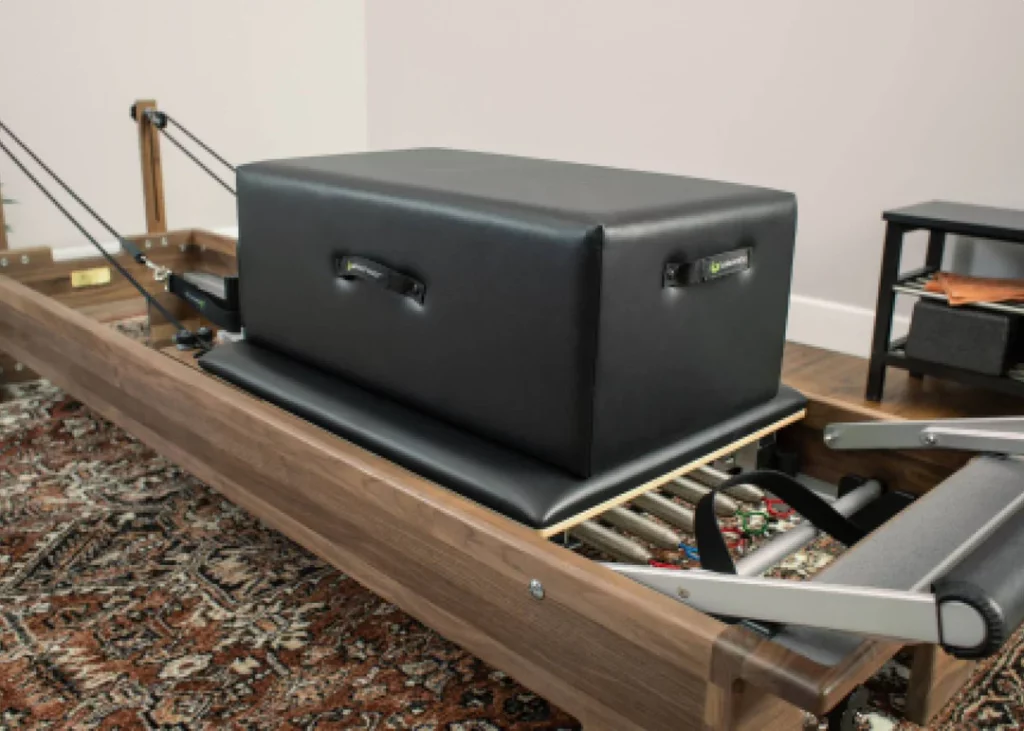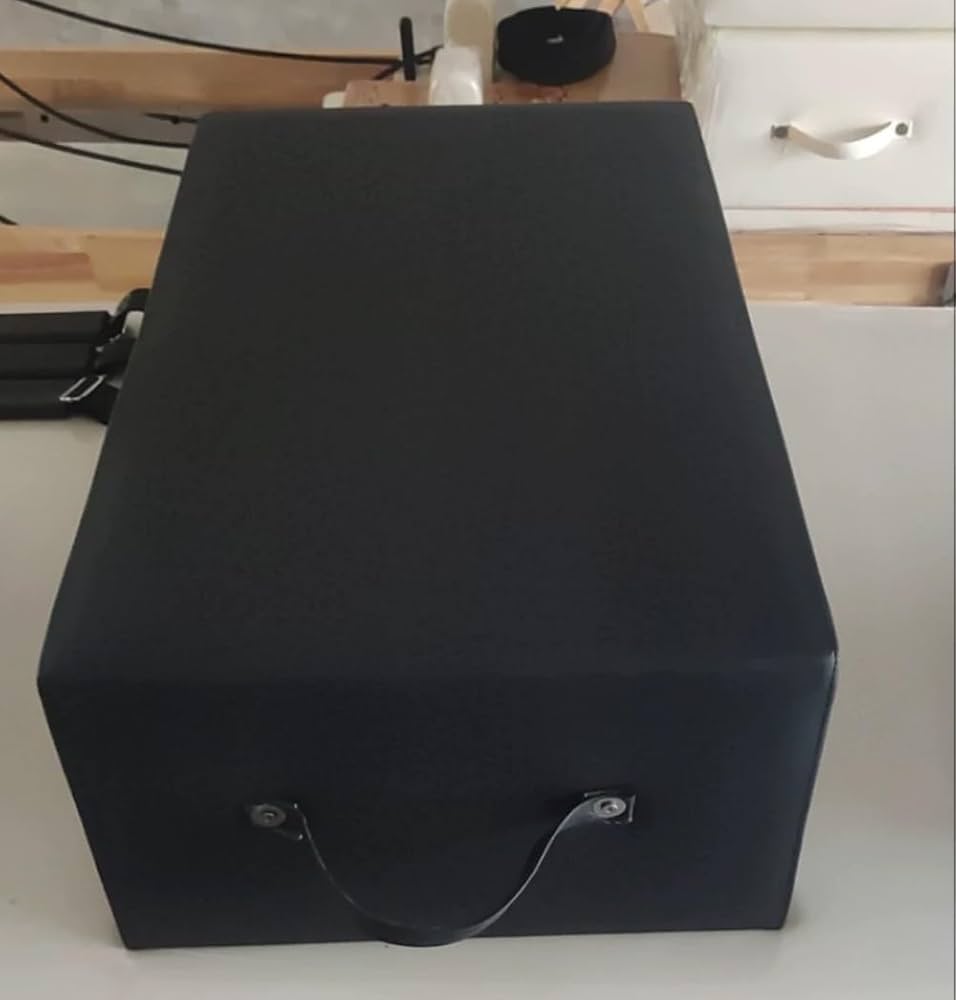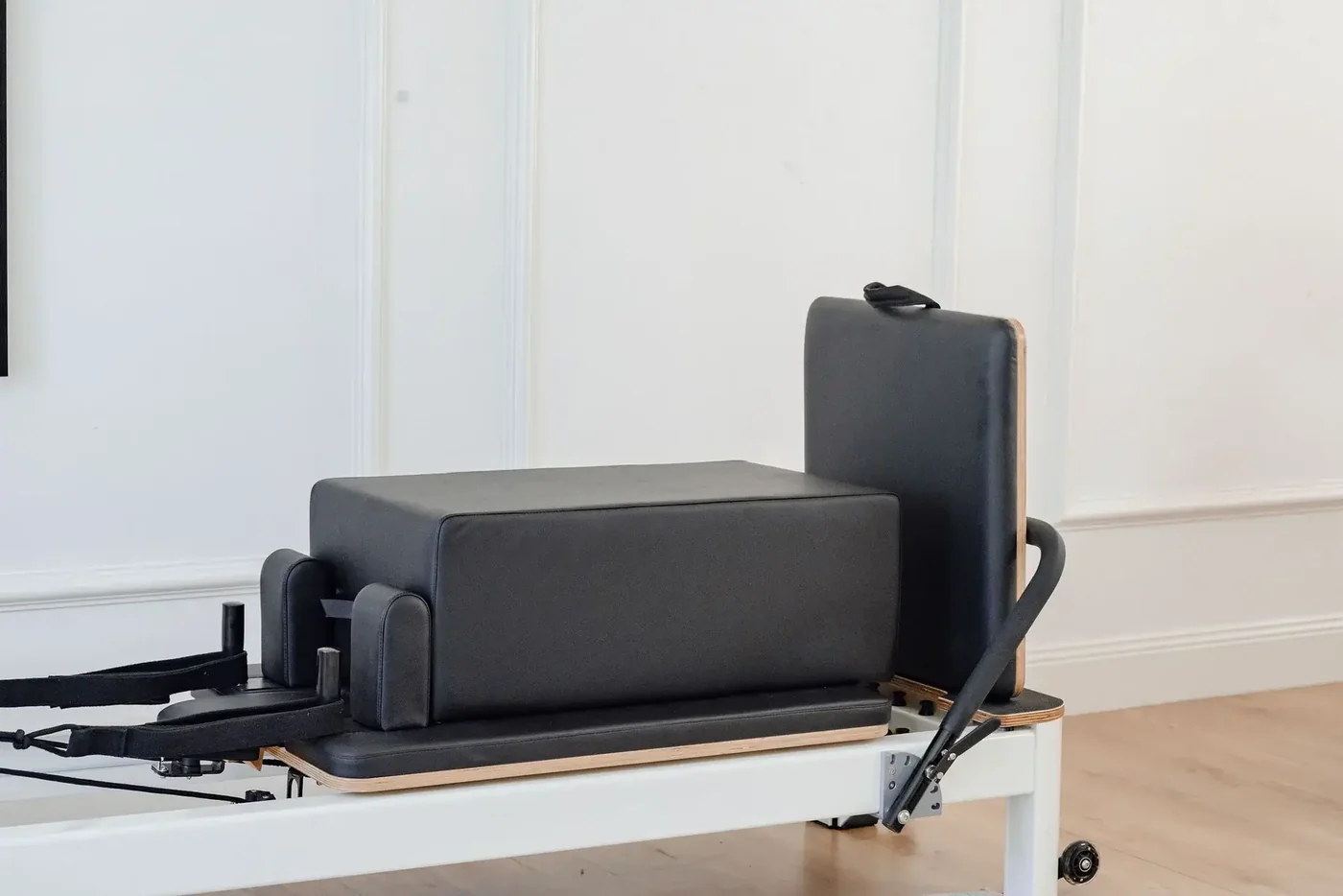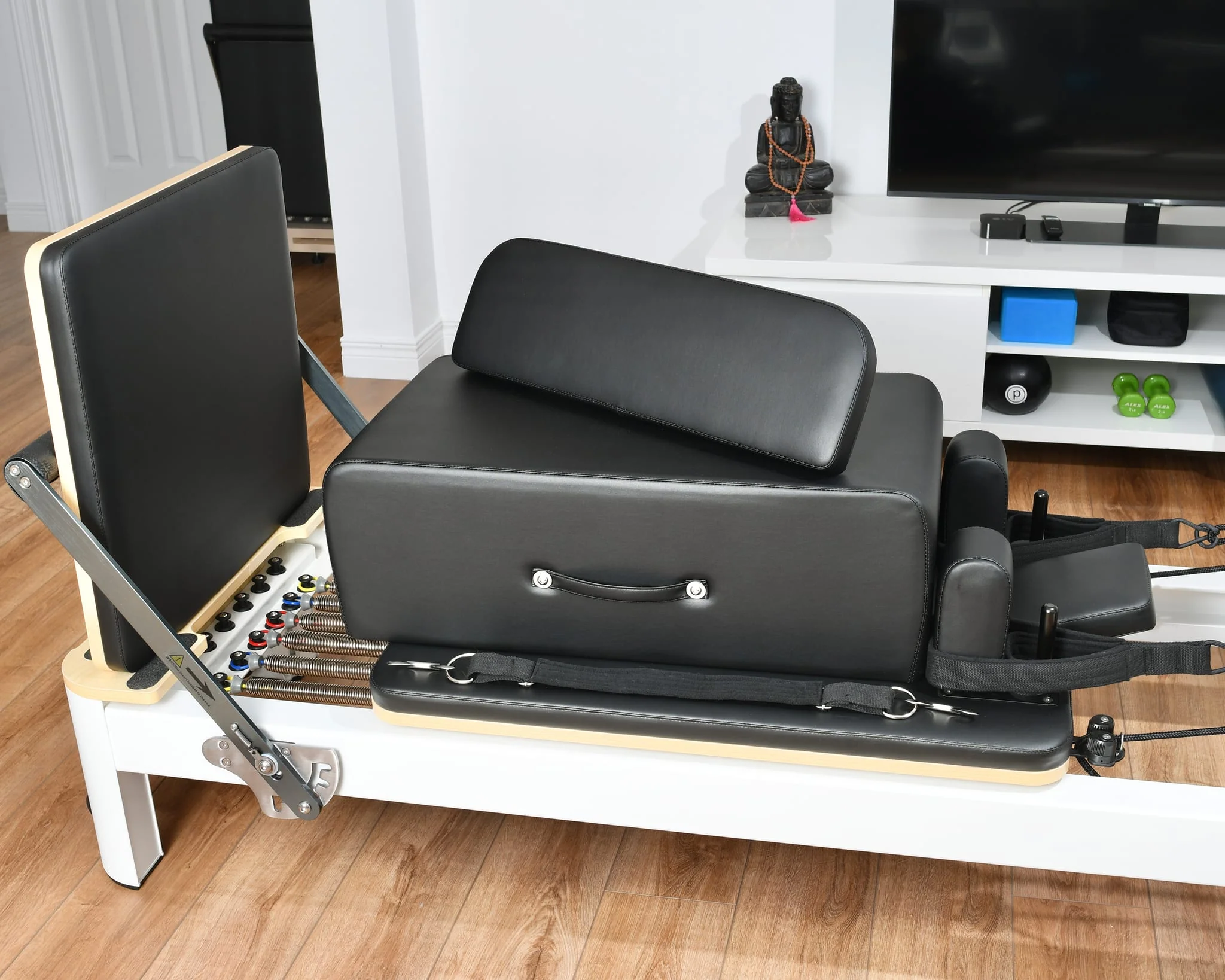The Pilates reformer sitting box is an invaluable tool that enhances the versatility and effectiveness of Pilates practice. This piece of equipment, often overlooked, can significantly improve the quality of workouts by providing additional support, stability, and a variety of exercise options. Understanding the benefits of incorporating a sitting box into your Pilates routine can lead to a more comprehensive and rewarding practice. Below are the top benefits of using a Pilates reformer sitting box.
Enhanced Stability and Support
One of the primary advantages of using a Pilates reformer sitting box is the enhanced stability it offers during exercises. The box provides a solid base that allows practitioners to focus on their form and alignment without the distraction of balancing on the reformer alone. This stability is particularly beneficial for beginners who may struggle with coordination and control.
Moreover, the sitting box can be used to modify exercises for those with limited mobility or injuries. By providing additional support, the box allows individuals to engage in movements they might otherwise find challenging. This adaptability makes the sitting box an essential tool for rehabilitation and progressive training.
Improved Alignment
Proper alignment is crucial in Pilates to ensure that exercises are performed safely and effectively. The sitting box encourages correct posture by providing a designated space for the body. When seated on the box, practitioners can better align their spine and pelvis, which is essential for executing movements correctly.
Additionally, the box can serve as a visual and physical guide for maintaining alignment throughout various exercises. This feature is particularly beneficial for instructors who can use the box to demonstrate proper positioning and ensure that students are executing movements with the correct form.
Increased Range of Motion
The Pilates reformer sitting box can facilitate a greater range of motion during exercises. By elevating the body, the box allows for deeper stretches and more extensive movements that may not be achievable on the reformer alone. This increased range of motion can lead to improved flexibility and strength over time.
For instance, when performing leg and arm exercises, the sitting box can be used to create more space for movement, allowing practitioners to engage their muscles more effectively. This expanded range can enhance the overall effectiveness of a workout, leading to quicker progress and better results.
Variety of Exercises
The versatility of the sitting box means that it can be used for a wide range of exercises, making it a valuable addition to any Pilates routine. From seated exercises to standing movements, the box can be incorporated into various workouts to target different muscle groups.
- Seated Exercises: The box can be used for seated twists, leg lifts, and arm movements, providing a stable platform for these activities.
- Standing Exercises: Practitioners can utilise the box for balance and support during standing exercises, such as lunges and squats.
- Stretching: The box can also be employed for stretching exercises, allowing for deeper and more effective stretches.
Enhanced Core Engagement
Core strength is a fundamental aspect of Pilates, and the sitting box can significantly enhance core engagement during workouts. By providing a stable surface, the box allows practitioners to focus on activating their core muscles without the distraction of maintaining balance.
Exercises performed on the sitting box often require greater core stability, as the body must work harder to maintain control while engaging in movements. This increased focus on core engagement can lead to improved strength and stability, which are essential for overall fitness and functional movement.
Targeting Specific Muscle Groups
The sitting box can be used strategically to target specific muscle groups more effectively. For example, when performing exercises that require leg lifts or arm movements, the box can help isolate the desired muscles, allowing for more concentrated work on those areas.
This targeted approach can be particularly beneficial for individuals looking to strengthen specific muscles or improve their performance in particular activities. By incorporating the sitting box into workouts, practitioners can tailor their routines to meet their individual fitness goals.

Facilitating Rehabilitation and Injury Prevention
The sitting box is an excellent tool for rehabilitation and injury prevention. Its supportive nature allows individuals recovering from injuries to engage in safe and effective exercises that promote healing and strength building. The box can be used to modify movements, ensuring that practitioners do not exacerbate existing injuries while still benefiting from their Pilates practice.
Furthermore, the box can help prevent injuries by promoting proper alignment and core engagement. By reinforcing good movement patterns, practitioners are less likely to develop compensatory habits that can lead to injuries over time. This focus on safety and alignment is crucial for anyone looking to maintain a healthy and active lifestyle.
Customisation of Workouts
The versatility of the sitting box allows for a high degree of customisation in workouts. Instructors can easily modify exercises to suit the needs and abilities of individual practitioners, making it an ideal tool for group classes or personal training sessions.
This customisation can include adjusting the height of the box, changing the angle of exercises, or incorporating additional resistance through the reformer’s springs. Such flexibility ensures that every practitioner can engage in a workout that is both challenging and appropriate for their skill level.
Improved Mind-Body Connection
Practising Pilates with a sitting box can enhance the mind-body connection that is central to the discipline. The box encourages practitioners to focus on their movements, breathing, and alignment, fostering a deeper awareness of their bodies. This heightened awareness can lead to improved concentration and mindfulness during workouts.
By engaging more fully with their practice, individuals can experience greater benefits from their workouts, including reduced stress and improved mental clarity. The sitting box serves as a tool to facilitate this connection, allowing practitioners to immerse themselves in their movements and achieve a more profound sense of well-being.
Encouraging Consistency
Incorporating a sitting box into Pilates practice can also encourage consistency. The variety of exercises and modifications available with the box can keep workouts fresh and engaging, reducing the likelihood of boredom or plateauing in progress. This variety is essential for maintaining motivation and commitment to a regular practice.
Moreover, the supportive nature of the sitting box can make workouts more accessible and enjoyable for individuals of all skill levels. When practitioners feel comfortable and supported, they are more likely to continue their practice and reap the long-term benefits of Pilates.

Conclusion
The Pilates reformer sitting box is a versatile and beneficial tool that can enhance any Pilates practice. From improved stability and alignment to increased range of motion and core engagement, the advantages of using a sitting box are numerous. Whether you are a beginner or an experienced practitioner, incorporating a sitting box into your routine can lead to a more effective and enjoyable Pilates experience.
By understanding and utilising the benefits of the sitting box, practitioners can take their Pilates practice to new heights, achieving their fitness goals while fostering a deeper connection with their bodies. Embrace the versatility of the sitting box and discover how it can transform your Pilates journey.
See Also: What is a Pilates Sitting Box and why you might need one.


